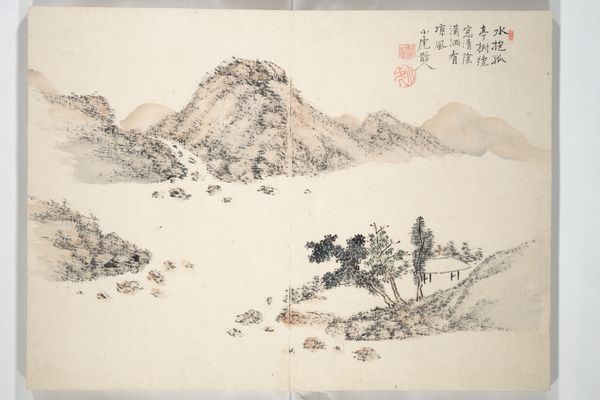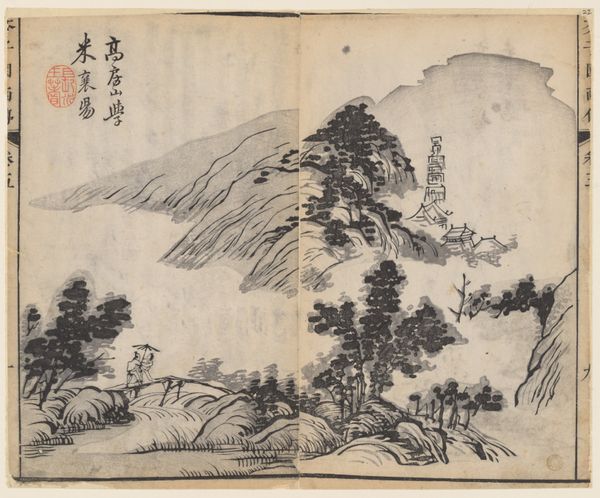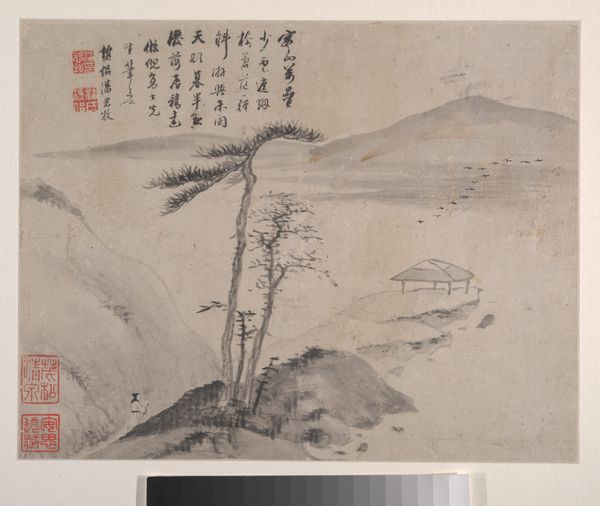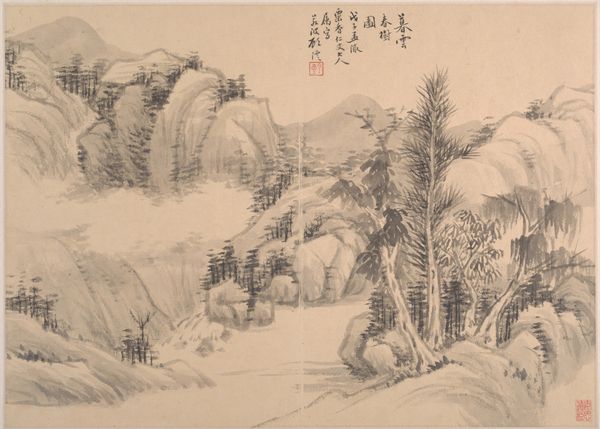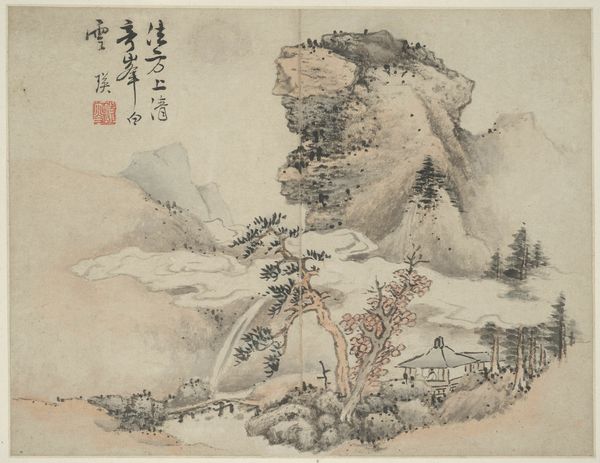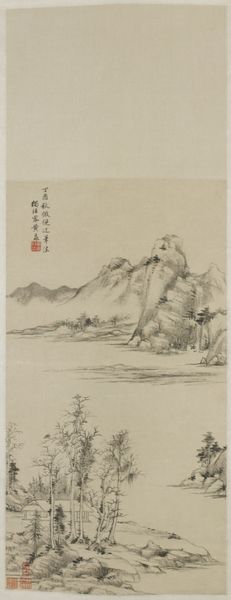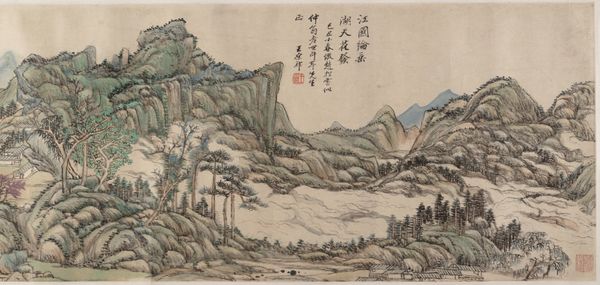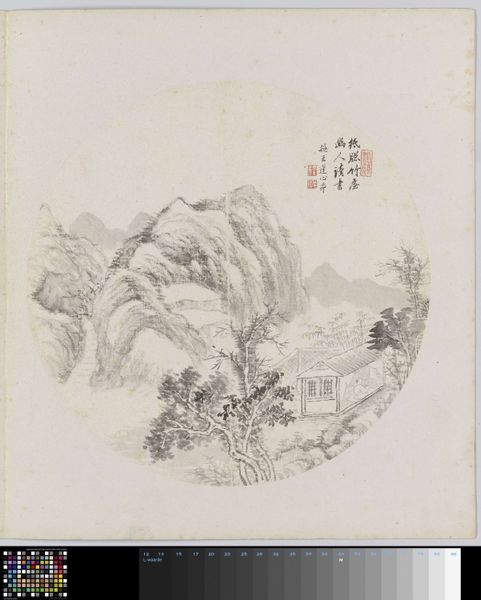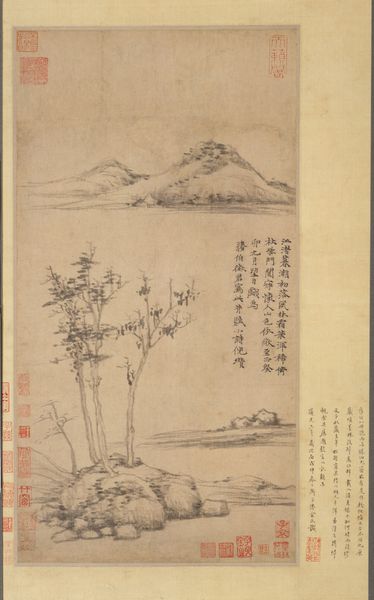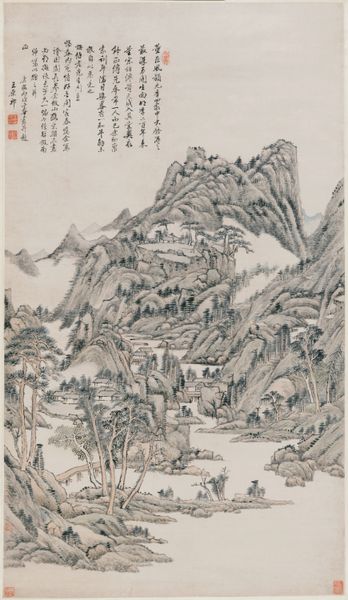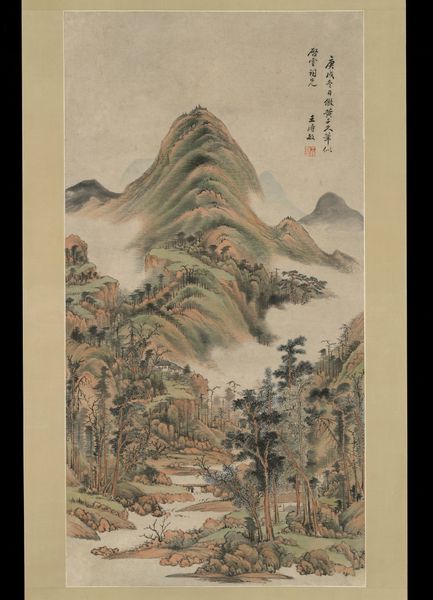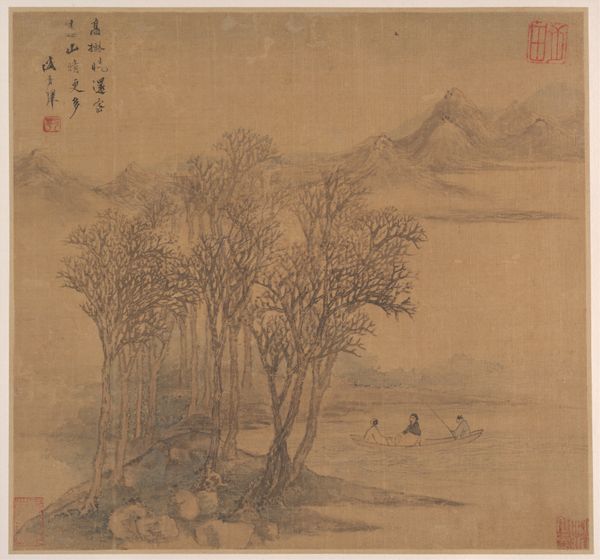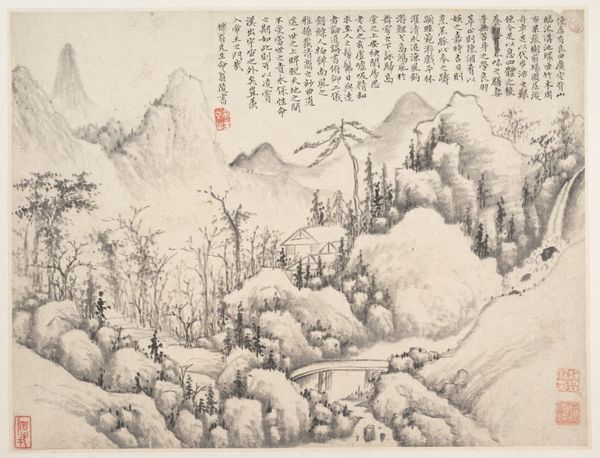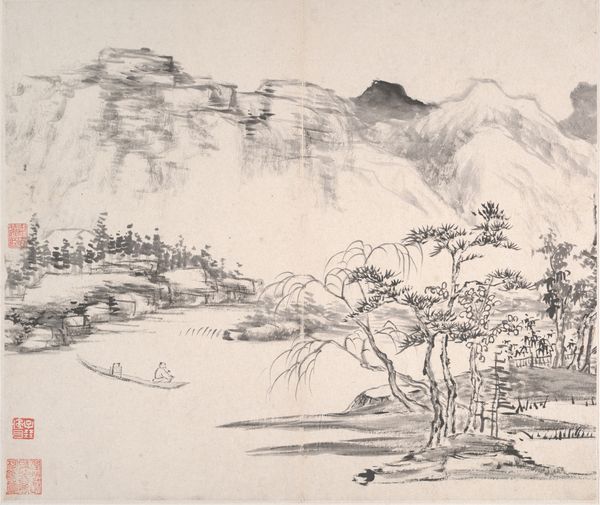
painting, watercolor
#
painting
#
asian-art
#
landscape
#
watercolor
Dimensions: 9 3/4 x 13 1/2 in. (24.8 x 34.3 cm)
Copyright: Public Domain
Editor: So, we're looking at "Landscape," a watercolor by Cheng Tinglu, created around 1827. It feels very delicate and dreamlike. I'm struck by how subtly the different washes create depth. What's your take on this piece? Curator: I find myself drawn to the artist's use of watercolor itself. Notice the very conscious manipulation of the medium – the intentional bleeding and pooling. Consider how the rice paper, a carefully cultivated commodity in itself, reacts with the pigment, influencing the final image. The blurred lines challenge Western notions of clear representation. Editor: That's a really interesting way to frame it. I was focusing more on the visual aspect. How do you think the social context of the time might be influencing this? Curator: Absolutely. Consider the social status associated with literati painting during the Qing dynasty. It wasn't just about technical skill, but access to specific materials, workshops, and a deep understanding of artistic and philosophical traditions, essentially defining its exclusive nature. How accessible were those materials? Whose labor was used in the creation of that paper? These are important questions that we must ask ourselves. Editor: So the painting becomes less about the literal depiction of the landscape and more about the statement of the access to specific means. It feels a bit exclusive, in a way. Curator: Precisely. And the perceived 'delicacy' can be re-evaluated when one examines the intensive labor and economic privilege underpinning it. Thinking about the cultural weight carried within each brushstroke due to social elements adds further dimensions to what you initially observed, don't you think? Editor: It completely does. I hadn’t really thought about art from this period through that kind of social lens before. Curator: Indeed, by interrogating these materials and production, we uncover richer layers of meaning than the purely aesthetic. It moves beyond beauty and gives you so much more appreciation for what labor and intention went into the art. Editor: I’ll definitely remember that. Thank you for that perspective!
Comments
No comments
Be the first to comment and join the conversation on the ultimate creative platform.
